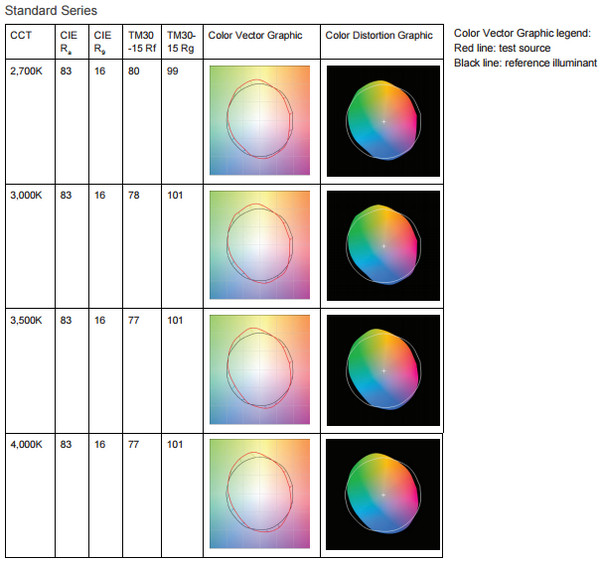Xicato®, a leading manufacturer of intelligent light sources, published today on its website TM-30-15 Color Rendering results for its entire product range of XTM and XIM modules.
TM-30-15 is a new method for quantifying color rendering properties of light sources that was recently published by the Illuminating Engineering Society. It distinguishes both color fidelity and color gamut and provides a framework for interpreting chroma and hue shift associated with light sources.
 |
|
Xicato® LED modules TM-30-15 test results. (Photo courtesy of Xicato) |
“At Xicato we are very supportive of TM-30-15 overall and recognize the need for an improved metric system along these two dimensions. We have always been at the forefront of educating the marketplace and have created a lot of awareness around color rendering and the rendering metrics, going beyond just CRI and talking about R9, GAI and other individual indices as well. It is not easy to find a manufacturer who has done more than Xicato to effectively and honestly educate the market. We will continue to do so and moving forward will include TM-30-15 in our education materials,” says Menko de Roos, CEO of Xicato.
Xicato’s different color rendering series continue to stand out when their properties are quantified within the TM-30-15 framework. Xicato Artist Series® was developed to represent the lit effect of halogen and has a color fidelity score (Rf) of 96 and a color gamut score (Rg) of 102. Xicato Vibrant Series® shows its ability to increase chroma with an Rg of 106 while not compromising accurate color rendering as is demonstrated by an Rf of 93.
While TM-30-15 is a substantial step forward in quantifying color rendering, it should be noted that the consistency and long term stability of the light source color point is critical for consistent and uniform appearance of lightly colored and white objects. Xicato continues to lead the industry in this area as well with its 1x2 MacAdam ellipse color consistency specification and unique 5 year warranty on color shift less than du’v’ of 0.003.












